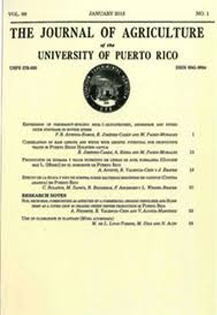Abstract
The corn earworm [Helicoverpa zea (Boddie) (Lepidoptera: Noctuidae)], an important pest of corn (Zea mays L.), causes yield losses of more than 15%. The most efficient method to combat this pest is chemical control. However, excessive use of insecticides has caused the development of resistance to some active ingredients. The objectives of this research were: 1) to evaluate the effect of three biological insecticides, seven organic synthetic insecticides and nine insecticide combinations to control H. zea larvae in bioassays, and (2) to corroborate the presence of H. zea from larvae collected in sweet corn fields. Larvae (12 to 28 mm) were placed on artificial diets based on wheat germ and they were treated with 200 μL of insecticide solution at low and high dosages (0.02 to 9.60 g/L and 0.18 to 4.80 ml/L), following the product label. Larval mortality was evaluated at 24, 48, 72, 96 and 120 h after applying the insecticides. The most effective treatments were the chlorpyrifos and the combinations chlorantraniliprole + Steinernema carpocapsae (Weiser) (Nematoda: Steinernematidae); nucleopolyhedrovirus + S. carpocapsae, and spinetoram + S. carpocapsae, which caused more than 80% of larval mortality at 48 h in Isabela and Juana Díaz, while in Lajas the same percentages of mortality were obtained at 120 h at high dosages. The least effective treatments were Chromobacterium subtsugae sp. nov. and nucleopolyhedrovirus with less than 10 and 45 % mortality, respectively, at 120 h and at high doses. All 1,238 specimens were identified as H. zea.

